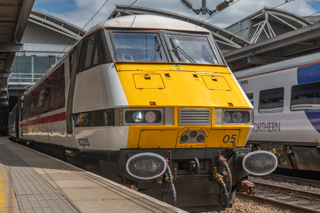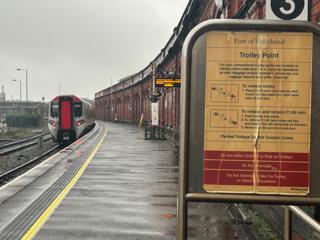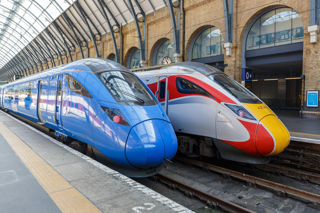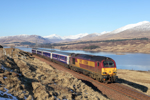It seems incredible now, but in the later BR years, before privatisation, we could expect to see passenger fatalities in a train crash roughly every 18 months.
Viewed from today’s perspective, that is a truly shocking statistic. At the time, it was seen as tragic, but to be expected.
Moreover, we proudly regarded our railways as an epitome of safety, which was clearly far from the case. Indeed, at the time of privatisation there were still main lines unfitted with the Automatic Warning System (AWS).
Nowadays, there would be media, public and political uproar at a passenger fatality every year and a half - as indeed there was in the 31-month period encompassing Ladbroke Grove, Hatfield and Potters Bar. These were the accidents that kick-started a rapid process of change that prompted the nationwide withdrawal of the Mk 1 carriage in everyday use (it remains for charters), and the nationwide rapid fitment of Train Protection Warning System (TPWS).
This rapidly shifting context and public attitude to rail safety is reinforced by a quick look at my battered and much-read original paperback copy of L T C Rolt’s classic book Red for Danger, which should be essential reading for every railwayman and woman.
The publisher’s promotional ‘blurb’ on the rear cover proclaims: “…Red for Danger - which covers every major accident on British railways between 1840 and 1957 and tells of the lessons learned which have made a British railway carriage one of the safest places in the world!”
That claim was clearly wide of the mark, but went unchallenged. And it’s a theme that Rolt pursues elsewhere. My revised edition is dated 1966, and on the flyleaf, Rolt quotes Shakespeare: “Out of this nettle, danger, we’ll pluck the flower, safety.” (Henry IV, Part 1).
These quotations illustrate just how much has been done to take the railway forward in safety terms in the last half-century, from a point at which book publisher Pan felt able to claim that a British railway carriage was “one of the safest places in the world”!
That claim is much more true today than it was in 1966, because in 2015 Britain’s railways in terms of passenger fatalities are now unquestionably the safest in Europe - and not just by a small margin (RAIL 780).
Passenger fatalities work out at 0.7 per billion train kilometres, while the next best (the Netherlands) is 2.9 billion. By far the worst in Europe is Spain, at 110.5 billion, although that figure is heavily skewed by the high speed train crash at Santiago de Compostela in July 2013, when 79 people lost their lives (RAIL 728).
This proves how just a single serious incident can have a major impact on both statistics and reputation, which is why the appalling Signal Passed at Danger (SPAD) by a West Coast Railways steam excursion at Wootton Bassett on March 7 was so significant.
After passing SN45 at danger, the excursion hauled by 34067 Tangmere ran across a trailing double turnout junction occupied only a minute before by a First Great Western HST. We were a heartbeat away from a spectacular crash in which multiple fatalities would have been inevitable.
That this was caused in a train of Mk 1/2 carriages, and by apparent abuse of the TPWS, meant it became a problem that fell squarely into Office of Rail and Road Chief Inspector and Director of Railway Safety Ian Prosser’s lap. (I’ll come back to this.)
Thanks largely to TPWS, no passenger has died on a British passenger train for more than eight years, since 84-year-old Margaret Masson lost her life in the high-speed Pendolino derailment of February 23 2007 near Grayrigg, in the Lake District. That is an astonishing achievement given that we now run around 20,000 trains every day - equating to 900,000 train miles.
In each of the past two years, there has been no passenger train derailment for the first time since records began. It is especially galling, therefore, that this excellent trend was broken on July 26 when the leading two vehicles of a Southeastern eight-car train, led by a Class 375, was derailed near Chilham station when it hit a herd of cows.
This goes to show just how fragile rail safety is. Accidents can be caused by the most innocuous decision or by an otherwise minor infrastructure failure, leading to animals straying onto the line. A very small issue or an innocent low-grade wrong decision can trigger catastophic and even fatal cascades of events.
Railway history is littered with incidents of truly horrible fatal consequences flowing from such minor events, as the terrible accidents at Hawes Junction (1910) and Abermule (1921) illustrate only too clearly.
Full details of the current safety statistics for our railways were reported in RAIL 780, so I will not repeat them here. They are good, but could be better. And complacency is always an enemy in circumstances like this - as HMRI Chief Inspector Ian Prosser is only too aware. I use his traditional title, rather than his designation as Director of Railway Safety (as the ORR tends to like him to be publicly known), because 2015 is a very special year for Ian and his team.
This year marks the 175th anniversary of the formation of the Railway Inspectorate, an organisation set up at the instigation of none other than George Stephenson. He had written to the Board of Trade, urging the establishment of a body to investigate on the causes of railway accidents and (crucially) to make recommendations to improve safety by preventing the same kinds of accidents happening again.
So began the long march towards the safety achievements of today. Only the British Transport Police (people described as policemen were employed on the railway from 1838) is older as a railway institution in the country that gave railways to the world.
Prosser is very proud to be only the 25th holder of the title ‘Chief Inspector’ in an organisation that was given its royal warrant in 1990, to become Her Majesty’s Railway Inspectorate. In its 175th anniversary year (the anniversary was on August 10), it is appropriate to meet and talk to Prosser, who has been a RAIL reader since 1988.
We meet at the Office of Rail and Road offices just off Kingsway in London, a short distance from the fascinating ramp down to the Kingsway subway, where London’s ‘third rail’ trams used to burrow underground to emerge on the Embankment. The stone setts, running rails and centre power conduit are all still there, 63 years after the last tram ran in 1952. Interesting to think that if they’d survived, they would now come under Prosser’s regulatory control, as do all trams and light rail in Britain.
Prosser starts by outlining what HMRI is doing in its most strategic sense to avoid complacency, and thereby hopefully ensure we retain our status as Europe’s safest railway.
“We can’t be complacent,” he stresses. “And so one of the key messages in the report [Health and Safety Report 2014-15] is that we focus on looking forward. All of our measures are currently backward-looking. They are essentially lagging indicators, and what’s very important is to look forward and try to predict and prevent.
“This is why a lot of focus for me since I’ve been here is to not only increase proactive inspection, but also to try and understand management maturity and organisation so that we can better predict and prevent incidents.”
In what even HMRI today concedes was a dark period for it, under Health & Safety Executive ‘ownership’ in the 1990s, the messages I recall were all about less inspection and increasing responsibility on the ‘duty holder’ to self-police and do his job, to ensure safety.
A thorn in the side for HMRI after the collision that killed 31 people at Ladbroke Grove was that the controversial track layout in the Paddington station approach beyond SN109 (passed at danger by the Thames Turbo, which then collided head-on with a high-speed inbound HST) had never been approved by HMRI.
So, is this an acceptance that the HSE philosophy was flawed, and that a greater degree of inspection is required?
“We’re not responsible for complying with the law, that’s the duty holder’s responsibility,” says Prosser with great firmness. “They must have their own adequate procedures.
“It is our job and our statutory duty to supervise not just the duty holder’s arrangements to control risk, but also to supervise their own assurance processes. In some duty holders we have found weaknesses in their assurance processes. It is therefore very important for us to target effectively, because we can’t - as you say - inspect everything.
“So we have developed a management maturity model which helps us target organisations’ weaknesses and understand their management capabilities better, so that we can target that resource to where it’s really needed.”
But surely you can only do all that by actually getting out there and having a look?
“Yes.”
So are there now many more inspections happening?
“There is more re-inspection going on than when I arrived here. We have a lot of statutory work to do and we have to obviously investigate incidents, which also give you important learning from which recommendations come. Inspectors spend just over half of their time actually out making inspections - and that is a big increase on what was happening when I got here seven years ago, when the figure was probably in the high 20s.”
So do you have more inspectors - or are the same number working more productively?
“We have the same number of inspectors, but we have reduced our costs over seven years by 30%. I have also made sure we don’t have layers of inspectors sitting in management - I want inspectors out there, not sitting in here. I’ve been very active myself on inspections - I get out and about as much as I can.”
Is it the case that inspections in the digital and high-tech age are as much about inspecting process and paperwork, as they used to be about checking signal boxes, interlocking and trackwork?
“I wouldn’t say we’re out there doing the job that the duty holder should do, but certainly my focus has been ‘boots on ballast’ - which does mean that what’s very important for us is to look at the paperwork, but then make sure that what the paperwork demands matches what actually happens on the ground.”
To make sure you have an integrated and effective operating system - not just a row of ring binders on a shelf saying one thing, while front end staff do something else?
“Correct - and that is very important. We find senior management thinking they’re getting outcomes, but they aren’t actually happening. A big problem is that what’s stipulated in the plan isn’t understood by the workforce, leading to loopholes in safety.”
Does he think that having a generation of managers emerging who have never had personal experience of the industry under stress after a fatal accident is a safety risk in itself? Does that breed complacency or a lack of vigilance, thereby increasing risk?
Prosser takes the point: “I will tell you that all the probability calculations tell you that presently the probability of a fatal passenger train accident is one in eight years. So right now we are running hard up against that probability, given that Grayrigg was in February 2007, just over eight years ago.
“It is especially important that we maintain our vigilance, given that we have lots of people in the industry now who weren’t around in what I call the bad old days. The currently ongoing safety record is something we just cannot take for granted, and that’s really important - we cannot and must not take this for granted. We do have quite a lot of pressures on the system.”
In his own words, this sums up why a safety regulator needs to keep “banging on” about this message.
“We might be the safest, but we’re not safe enough, and there are plenty of areas where we see a need for improvement. This is not about gold plating, this is about driving towards excellence,” he says.
And these areas are?
“Safety culture and management maturity,” Prosser answers without hesitation. “It is slowly improving - but only slowly - and it’s still some way short of excellent.”
So is the railway still lagging culturally behind the hazardous industry Prosser came from - the chemical industry - or other high-risk industries such as oil and gas?
“Yes, the railway is still behind,” he replies. “The rail industry is scoring maybe 3 out of 5. Some parts of it are better than that, such as London Underground, which is maybe three and a half. But other sectors are up at 4-plus, so rail has some work to do still.”
Why is the railway lagging behind those other industries - after all, the railway has been around longer, so might therefore be expected to be stronger?
“It takes time and consistency of message from senior management, and we have that now much more strongly with Mark Carne . I don’t think this consistency has been there all the time.”
So was railway management deficient in that respect before then? Or is this cultural deficiency down to a lack of investment in the past?
“No,” says Prosser. “I think it’s just getting the right leadership. It’s very much down to leadership, and then you have to trickle that leadership right down through the organisation. I’ve stressed this message endlessly to NR, who are now saying to me they realise that not all their managers and middle ranks and some of the senior ranks ‘get it’, as it were. To completely get this right and make it effective takes time, and it takes perseverance.”
But I’m still puzzled as to why rail, which has been around much longer than either the chemical industry, or oil and gas, isn’t streets ahead of those industries, as you logically might expect.
If it’s not a lack of investment, is it because the railway has (to put it bluntly) dragged its feet in bygone decades, making what can be often costly changes only when public, media and political pressure after a big accident demands change?
Prosser agrees: “I think you’ve hit the nail on the head there. We’ve been too reactive as an industry in the past. That’s why I’m getting back to this ‘predict and prevent’, rather than learn from your mistakes, which has been the way rail has approached this. It’s not a bad thing to learn from your mistakes - but it’s much better if you can learn before you have the big mistakes.
“You know from history that history doesn’t look good on the railways. This might sound controversial, but it’s nonetheless true - there is no such thing as the good old days in railway speak. The industry was always too reactive in implementing safety improvements, rather than being proactive.
“One of the things I’m also trying to
stress is that sometimes too much change
can cause the consistent improvement
message to be diluted - so consistency, consistency and leadership coming from the same people, driving the same message for a period of time, is very important.
“We went through a period after privatisation where we saw some quite serious accidents, around the time of the 1990s and 2000s, so that took us back. Sometimes it’s three steps forward and one step back, but I think we’re now in a period where we’ve had enough stability to pave the way for a final push to take us to excellence. We would see not just excellence in health and safety, but excellence in customer satisfaction and efficiency as well.”
History does support Prosser’s view that major advances in railway safety only followed major accidents, with consequent reputational damage for the railway, accompanied by Railway Inspectorate action and pressure. Look at history and this was certainly true of major safety advances such as ‘lock, block and brake’ - facing point locking/interlocking, block signalling to safely separate trains and continuous train brakes where every wheel can be braked, controlled by the driver.
If we accept this is true, then HMRI itself in the 1990s, when it was weakened as a result of it being part of the Health & Safety Executive, must surely bear part of the responsibility for creating the conditions that led to Southall (1997), Ladbroke Grove (1999), Hatfield (2000) and Potters Bar (2002)?
Prosser responds: “It’s very important that we have a strong and effective regulator, particularly when we have an industry that isn’t achieving the excellent level of management maturity that we really want. Therefore, the safety regulator has to be really on the ball.”
So that’s a yes then? HMRI must accept some responsibility for allowing the conditions where those accidents occurred to develop?
“I can only speak personally on this when those sorts of things happen, then the regulator has to take some of the blame. And that’s why it’s so important that we focus on continuous improvement of ourselves too, in this organisation.”
It says a lot about Prosser that he’s prepared to accept this point. And it certainly supports the comments made by Chief Inspector of Railways Alan Osborne, who resigned in October 2003 in protest at the damaging management of HMRI by HSE (as covered exclusively in RAIL at the time, RAIL 481).
Prosser moves onto other areas where he wants to see consistent action and improvement. For example, he reckons that the railway is way behind in occupational health management and development. He agrees that some of the more traditional managers might see this as a bit “soft and fluffy”, and in the past might have viewed it through a rather macho prism. Consistency and maturity of approach will resolve this issue, he says.
The railway’s incredible ongoing growth also has an inevitable impact on increasing risk. Put simply: the more trains you run, the more chance statistically there is of those trains (and those who use, drive and control them) running into trouble. The odds of trouble shorten as activity increases - the trick is to stop the averages catching up.
“Growth is a good thing, of course, but there are safety implications,” says Prosser. “Network Rail over the past ten years has increased its efficiency by 30%, but at the same time the number of passengers has grown by about 60%.
“So we must look forward and properly manage this growth, because if we lose sight of these basic things we could drop the ball. We need to understand the impact of growth on the infrastructure, and renew and enhance it in a safe and sustainable way. This means focusing on the real basics of keeping London Underground or Network Rail infrastructure - the day to day stuff that needs to be done to sustain and maintain the railway.”
Is Network Rail doing that?
“We’ve certainly had some issues in CP4, and we’ve taken enforcement action around some aspects of track geometry and twists. There have been issues with renewal plans and maintenance backlogs. NR didn’t meet all its renewal plans for CP4, so that’s why I’m saying we mustn’t lose sight of these things. We’re putting a lot of pressure on Network Rail to make sure its plans going forward are properly resourced - and we will enforce when necessary.
“It is very important not to lose sight of keeping the railway sustainable, because we’ve seen a lot of investment after the problems from the early 2000s. We also have to realise that there’s often too much of a tendency to look at global numbers about the state of the assets. We must understand that a very local issue can suddenly become a big problem.”
When I make passing mention that NR’s enhancement programme looks something of a shambles (I have Great Western/Midland Main Line electrification in mind), Prosser is keen to ensure balance.
“I think we need to be careful. I do take issue a little bit with the word ‘shambles’ with the enhancement programme.”
OK - but given the “pausing” of the MML scheme and the terrible problems with the GW scheme, it’s not seen as a paragon of good management, is it? In a recent two-track weekend possession between Didcot and Reading, two worksites were all laid out with marker boards at Morton and Tilehurst, and yet no high-vis was seen on either site, while all the overhead line equipment remained locked away in compounds. At a third possession, a single lineside mast was erected. That’s a shambles, surely?
“Lots of their projects run very well, and there are examples like Norton Bridge where they’re ahead of schedule. So we need to be careful of a couple of issues with two or three possessions, in light that they do hundreds of these.”
If it was only a couple of issues, the Secretary of State for Transport would hardly have taken his recent decisions and actions about NR, surely?
“I’m just trying to make a point, Nigel. It’s not broken.”
Enhancement looks like it is?
Prosser counters: “I think first of all, it’s very important to realise that neither Network Rail nor other parts of the industry are broken. We wouldn’t be carrying the numbers of people we are carrying, and we wouldn’t be successfully investing in some areas as well as we are.
“I think there are specific issues with electrification that you can look at independently. It comes back to maturity. One of the other areas, while we’re on this topic of enhancements and projects, that we do see that could be improved is safety by design.
“We absolutely must start getting the ‘front end’ of projects right. And where we see problems with projects, from a safety perspective and from a performance perspective, is where there’s not enough work done up front.
“This is a cultural issue on the railways. I did not see this in my previous career with ICI, where we’d spend an awful lot of time on optioneering… engineering… design review… getting the scope of the project really nailed down right at the beginning. This is particularly important when you’re dealing with major upgrades.
“There has been too much silo thinking, whereas it’s crucial that you have an integrated programme. We have to get this upfront thinking right, and then the plans and costs are all right. It’s really important, and there are certainly weaknesses in this area that have been exposed.”
Indeed. Hence my use of the word ‘shambles’! So where do the really detailed problems lie? Is it the sheer scale of the task? Understanding of the issues? Competence and skills shortages?
“I think there’s a bandwidth issue in terms of not having the right number of people with the experience to put this sort of process in place and deliver it. We may be stretching our industry to a point where we do have to just pull back a little bit on some of the work.”
Is it just too big a job for the team that they have?
“Honestly? I don’t know - but that’s one of the things ORR is looking at in its investigation into enhancements. Does NR have the capability, not just in individuals but in totality, and (in particular) in certain areas? Our investigation, I think, will help.”
So NR is misunderstood, not incompetent?
“It’s difficult to use the word incompetent, but there are definitely areas where there can be big improvement. Our investigation is under way, plus NR is doing its own work under the leadership of one of its non-executive directors to really get to the bottom of all the issues it needs to address. I think we have had famine and feast in this industry as well, which hasn’t helped.”
Is Prosser talking about Government? For example, the Midland Main Line electrification only went into the High Level Output Specification in 2012 - and now it’s effectively out again. Electrification was completely off the Government’s agenda until then NR Chief Executive Iain Coucher and Chiltern Managing Director Adrian Shooter wrote to the DfT a few years ago, whereupon it was back in the mix once again.
This is hardly long-term strategic thinking, is it? Does Government share responsibility for failing to come up with a consistent plan that NR and its contractors can then gear up for and deliver against?
“I think collectively - the industry, government - could all work better if we had the one thing that I always feel is missing, and that’s a strategic plan.”
Does that mean a guiding mind?
“Whoever wants to do it - but they need to have a strategic long-term plan.”
So do we need a guiding mind…?
“We need a collective that gets together to ensure we actually have a strategic plan - because going from no electrification for 30 years or so, to expecting them to do the largest ever electrification project the country has ever attempted, is not strategic thinking.
“We could take some lessons from London Underground, which does perform (in our view) better than the main line railway.”
In terms of safety management, you mean?
“Yes - probably because its management maturity is stronger,” he replies.
“That said, LU still has some way to go, because we have had some issues this year around some of their construction safety managers. But their workforce safety is very good and is continuing to improve.”
That’s legacy and strategy covered, but what about the passengers? And how is maintaining and further improving passenger safety being managed? In part two of RAIL’s exclusive interview, Prosser discusses platform train interfaces, station design, level crossings and the value (or otherwise) of passenger announcements (RAIL 782).
- This feature was published in RAIL 781 on August 19 2015
















Login to comment
Comments
No comments have been made yet.